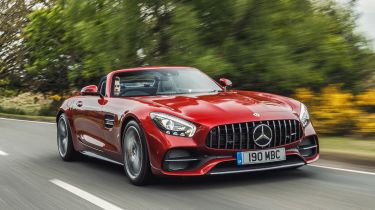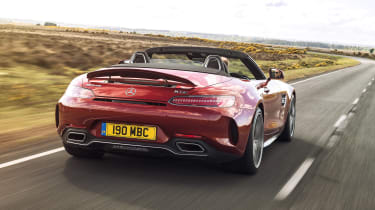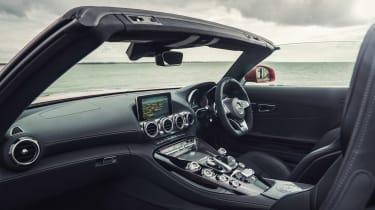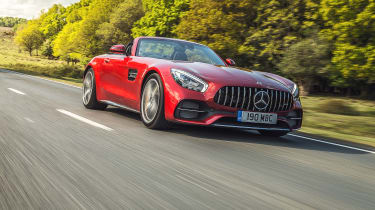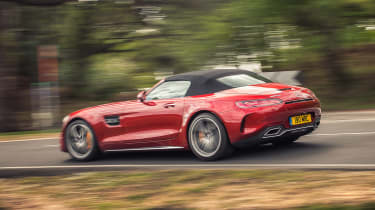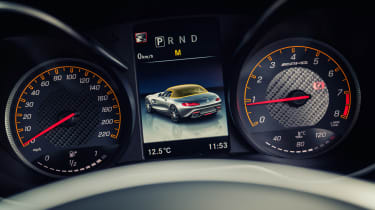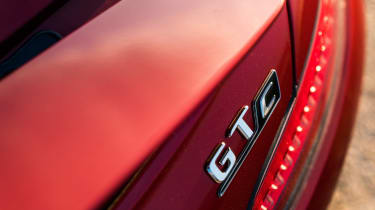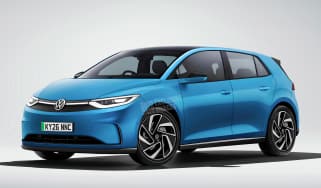Mercedes-AMG GT Roadster review
The awesome Mercedes-AMG GT Roadster offers wind-in-the-hair thrill seekers a genuine rival to the Porsche 911 Cabriolet
There are few more glamorous drop-tops than the latest roadster from the Mercedes-AMG division. Relative rarity, as well as its dramatic design, gives the long-nosed AMG GT roadster a bit of extra cachet compared to the Porsche 911 Cabriolet, which has been the Merc’s chief rival since launch.
Fortunately, owners with a liking for open-top motoring can select from an array of spectacular-looking, and rapid options. The Aston Martin Vantage, Audi R8 Spyder, Lamborghini Huracan Spyder and McLaren 570S Spider are all available for similar money – and any one of them would give a potential AMG buyer pause for thought.
• Best convertible cars on sale
Mercedes-AMG first offered the AMG GT Roadster for sale in 2016, and since then it has added a GT C model to the range, with a little more driver focus. The open-top car is closely based on its AMG GT coupe sister models, and shares its aluminium spaceframe chassis and body structure, as well as a light weight magnesium alloy bonnet. The whole AMG GT family also shares versions of the same 4.0-litre twin-turbo V8 engine, which drives the rear wheels via a seven-speed dual-clutch automatic transmission housed in the rear axle.
The standard AMG GT roadster spec includes 19-inch alloy wheels, a switchable AMG performance exhaust system, mechanical limited slip differential, silver-painted brake calipers and an electrically extending rear bootlid spoiler.
More reviews
Car group tests
In-depth reviews
Road tests
Inside you’ll find the Mercedes COMAND online infotainment system with an 8.4-inch display, and Nappa leather-trimmed electric memory seats amongst other luxuries.
Upgrade to the GT C spec and you’ll get 20-inch wheels, AMG RIDE CONTROL adjustable suspension, an electronic limited-slip differential, red brake calipers, parking sensors and reversing camera. Inside, there’s a sportier steering wheel and a premium Burmester sound system.
In the coupe line-up an AMG GT S model sits between the standard GT and the GT C, but the GTS is not available as a roadster. The highest performance option, the AMG GT R, is only available as a coupe, too.
The Mercedes-AMG GT Roadster is a dramatic, fast and thoroughly engaging high-performance car, especially in its most powerful GT C Roadster guise. Here, its 4.0-litre bi-turbo engine offers a scintillating 557bhp, for a 196mph top-speed and a sub-four second 0-62mph time.
It shares all its engineering with the AMG GT Coupe, apart from a neat convertible canvas roof that is superbly well-insulated when raised. Furthermore, it leaves occupants surprisingly unruffled when it’s folded – even at motorway cruising speeds. With handling and ride comfort that’s easily on par with the Porsche 911 Cabrio, only the Roadster’s lack of relative practicality lets it down. Assuming you can stomach the prodigious running costs, of course.
Engines, performance and drive
As well as optimal weight distribution from an engine that’s set well back from the front bumper and a gearbox located in the back axle, the AMG GT offers an array of advanced chassis tech that ensures its handling lives up to the looks.
Both Roadster models have a limited-slip differential to maximise traction. It’s electronically adjusted in the more driver-focused GT C model, which also has a steering rear axle to optimise cornering ability.
The result is a car that offers effortless cruising on the motorway, along with barely any buffeting at 70mph with the canvas roof stowed. It has masterful point-to-point performance, too.
Both models are quick, but the chassis tech and the car’s inherent balance means the AMG is rarely unruly. The steering feels well weighted in the hands, and is precise and direct, while the ride is firm but not uncomfortably so.
If you pick the top-spec GT C model you’ll benefit from adaptive dampers that offer a choice of settings. In Sport mode with the switchable exhaust switched to its loud mode there is plenty of fun to be had. The twin-turbo V8 howls towards the rev-limiter, and crackles and bangs on the overrun with maniacal glee.
The car is easily a match for the Porsche 911 Cabriolet in dynamic terms, but this extra dose of theatrics gives the AMG GT a whole extra dimension.
Engines
You get a choice of two engine specs in the AMG GT Roadster, but they’re both fundamentally the same engine. It’s Mercedes-AMG’s wonderfully vocal and muscular 4.0-litre bi-turbo unit. Aside from its sheer output, a notable feature of the engine is the exhaust and intakes running through the central vee, reducing the distance the gases need to travel – and thus lessening turbo lag.
The standard unit in the GT produces 476bhp at 6,000rpm, along with 630Nm of torque from just 1,700rpm. It’s enough to produce 0-62mph in 4.0 seconds flat, and hit a top speed of 188mph. The GT C makes 557bhp at 6,750rpm, and 680Nm from 1,900rpm. 0-62mph arrives in 3.7 seconds, and the maximum speed is 196mph.
MPG, CO2 and Running Costs
Fuel consumption probably isn’t at the top of the average AMG customer’s wish list, but thanks to cylinder de-activation, stop-start and other technical wizardry, the standard AMG GT Roadster can turn in a 30.1mpg ‘combined’ figure in official tests – producing 219g/km of CO2 emissions in the process.
We’d be amazed to hear of any owners getting anything close to 30mpg, however, as the thrills the 4.0-litre twin turbo engine create makes extensive use of the gas pedal pretty much irresistible. That’s even more the case in the GT C version, which claims 24.8mpg in official tests, along with 259g/km CO2 emissions. Again, it’s likely to return real life consumption in the teens if you drive it playfully.
Those emission figures – and high list prices – mean anyone using the AMG GT Roadster as a company car can expect big tax bills. A 37 per cent Benefit-in-Kind (BiK) rating means you’ll be coughing up £1,675 to the taxman every month, or £20k per year as a higher-rate tax payer.
Choosing the GT C model only adds £300 to the annual BiK tax bill, but it makes a big difference to road tax. The standard AMG GT has a first year VED rate of £1,200, followed by £450 to year six – after which it drops to £140. The GT C Roadster has a £2,000 first year charge.
Insurance groups
Both the AMG GT and GT C Roadster models fall into the highest insurance Group 50, which is hardly surprising given their prodigious performance. At least you’ll be paying similar premiums for any of the AMG’s rivals, which are all Group 50 too.
Depreciation
Due to its low sales figures and the prestige of the AMG badge, the GT Coupe and Roadster are performing well at resale time, with residual values potentially surpassing those of the Porsche 911 Cabriolet. Still, those high list prices mean you’ll still be losing a chunk of money in cash terms, even if the percentages look respectable compared to rivals.
Interior, design and technology
The design of the AMG GT Roadster is instantly recognisable as a relative of the SLS gullwing that preceded it. In fact, the two share much of their basic engineering structure; the GT is only the second car to be developed entirely in-house by Mercedes-AMG.
Starting at the front, the AMG GT features a prominent radiator grille that Mercedes names ‘Panamericana’ in honour of 1950s 300 SL racer that inspired the look. The side profile is very similar to the SLS, with a long, low and wide bonnet and a passenger compartment set well back towards the rear of the car. The low wide windscreen is also reminiscent of the SLS, but the overall exterior design is a little simpler and more svelte.
The convertible roof is a three-layer canvas version that opens and closes electronically in 11 seconds at speeds of up to 31mph. To return rigidity lost when cutting off the Coupe’s roof, the Roadster has thicker sills, and extra bracing under the dash and behind the seats. Roll-over protection is provided by twin steel hoops.
Inside, the dash is dominated by a cowled instrument binnacle ahead of the driver, while a quarter of circular ‘eyeball’ type vents create a focal point on top of the wide central console. A tablet style screen sits on the dash top above them, while the selector for the automated transmission and COMAND system controls on the console itself are flanked by the engine starter button and driver mode controls.
Sat-nav, stereo and infotainment
The feature-packed COMAMD infotainment system has a big clear display, and is controlled by a touchpad and wheel device that sits between the seats where you would once have expected to find the gear selector. In turn, the electronic gearlever is pushed backwards, and is smaller, because Mercedes-AMG expects anyone who wants to shift manually to use the paddles behind the steering wheel.
The infotainment system is easy to use, and features 3D mapping and Internet access, as well as a CD/DVD player and 10GB of hard-drive for music storage.
The Burmester audio upgrade – standard on the GT C – has 10 speakers, a 10-channel amp and 640-watt output.
Practicality, comfort and boot space
The AMG GT Roadster is certainly practical enough to qualify as a daily driver, thanks to its supple ride quality and refined manners when you want to take it easy.
With the roof up, the Roadster is nearly as good as the Coupe in terms of noise insulation, but when it’s down with the wind deflector in place the cabin remains calm and quiet with minimal buffeting – even at decent motorway speeds.
However, it’s not nearly as practical as a Porsche 911, which has those crucial – but cramped – extra seats in the rear. The AMG GT’s thick windscreen pillars and the low seating position mean it can be hard to see everything around you in town too, although it’s much less of an issue with the roof down. Space for bits and pieces is limited in the cabin, with very small door pockets and a tiny glovebox.
Size
Although the AMG GT is supposedly a smaller follow-up to the SLS, that description is a little misleading when you study the numbers. Yes, it’s shorter overall at 4,546mm versus 4,638mm, but the width is identical for both cars at 1,939mm. In Coupe guise, the AMG GT is actually taller than an SLS, measuring 1,288mm compared to its predecessor’s 1,252mm.
Leg room, head room & passenger space
Roof up, headroom in the AMG GT is reasonable, but it feels pretty enclosed – partly due to the fact you sit so low. The wide centre console, thick windscreen pillars and the high, long bonnet make it feel like a really big car, in fact. Roof down, the headroom-issue disappears, of course, and the AMG GT has plenty of legroom and seat adjustment.
Boot
The AMG GT’s boot isn’t enormous, but it will take 350 litres of luggage. However, dropping the roof on the Roadster version makes a big dent on the volume, reducing it by more than half to 165 litres, which is considerably less impressive.
Reliability and Safety
Don’t expect to see an independent Euro NCAP crash test of the Mercedes-AMG GT any time soon. Because it’s sold in such limited volumes that just won’t happen.
However, there’s no doubt the AMG developed spaceframe chassis that underpins the car is exceptionally strong, and it’s also well equipped with safety equipment – so long as you tick the right option boxes.
The Driving Assistance package costs less than £1,700 and includes Blind Spot Assist, Lane Keeping Assist, Distance Pilot DISTRONIC with active emergency braking and PRE-SAFE, which adjusts seat position and seatbelt tautness ahead of a predicted collision. It’s a good haul, but it would be more impressive if it were all included in the standard spec.
That said, the Roadster is very much a driver’s car, especially in GT C trim, and it’s understandable that some owners may not wish to have all those ‘nanny’ functions. Most would choose to be in charge things themselves.
We wouldn’t expect any significant reliability issues either, as the AMG GT is built using tech that’s used widely across the Mercedes line-up. The engine is built by hand at the AMG factory too, and with the ‘one man, one engine’ principle and a signed plaque under the bonnet, if it does play up you’ll know who to talk to.
That said, the AMG team works to the highest standards, and their reputation for build integrity and attention to detail is well established.
Warranty
The AMG GT Roadster comes with a three-year, unlimited mileage warranty, which is pretty much identical to cover offered by BMW, Jaguar and Porsche.
Servicing
Recommended service intervals are expected annually or every 12,500 miles. Speak to your dealer they’ll sell you a service plan for the AMG GT Roadster, which is likely to cost around £700 per year, or £60 per month.
